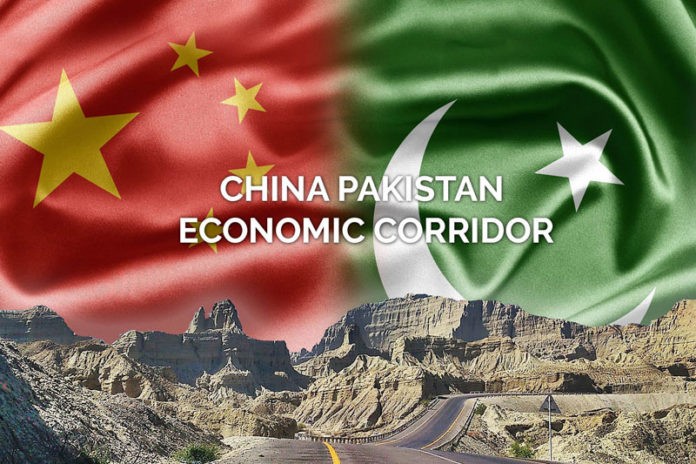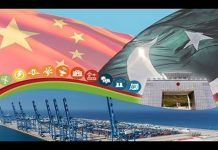
The writer is a Research Associate at the Centre of Excellence-China Pakistan Economic Corridor (CoE-CPEC) and a PhD Scholar at Pakistan Institute of Development Economics, Islamabad.
In the contemporary world, economy is treated as a strength of the State. The time has gone when the superpowers had large arsenals and extensive colonies to support their economies. Twenty first century is an era of economic independence and self-reliance. Currently, those nations which are economically independent, sovereign and self-reliant are dominant in the global geopolitical and economic scenario. The story behind the success of the Western powers, China, Japan, South Korea, Malaysia, Singapore and other fast progressing economies is their economic integration and industrialization. However, Pakistan as a country has different geopolitical and geo-economic position. Though Pakistan is a resource-rich and labour abundant economy, but relatively poor infrastructure, acute energy shortfall, low Foreign Direct Investment (FDI) and narrow manufacturing base have created barriers for global integration and industrialization in the economy.
These bottlenecks have restrained productivity over the years. In such circumstances, the investment of $59 billion under the project of China Pakistan Economic Corridor (CPEC) is a blessing in disguise that is supposed to revive the economy of Pakistan. When market forces fail to bring convergence in the economy, government intervention to overcome the situation becomes necessary. For Pakistan, this vital role of saviour is being played by CPEC, which aims to fulfil the investment saving gap, improve the industrial base and shape the manufacturing sector.
CPEC is not just a road network spread over the country rather it is an umbrella of various plans and strategies entailing solution for major problems of Pakistan economy. The key features of the program are: institutional collaboration in both countries, to overcome energy crises, develop transport infrastructure, and promote industrial cooperation. Prior to CPEC the Thar Coal mines and Gwadar as a seaport were never tapped. It is only through CPEC, Gwadar will gain the potential of becoming a world class deep-sea port at the Arabian Sea, which will be supporting a significant amount of global trade. Without the inflow of the Chinese FDI, the development of Gwadar would have remained a distant dream.
Similarly, concerns associated to energy and infrastructure are capitalised and around 17000 MW of new energy by 2018 will be added in the national grid. More than 3000 Km of upgradation and construction of roads and motorways are carried-out to strengthen the regional connectivity. Upgradation and modernization of railways are focused to improve the passenger and cargo transportation within Pakistan and 820 km optical-fibre project is about to be completed by the end of 2017, which will connect Khunjrab with Islamabad. The capacity of this newly installed connection is more than the existing in use capacity of Pakistan.
Industrial cooperation between China and Pakistan are now the priority of agenda. This would form the basis of well utilization of energy, infrastructure and Gwadar port. In this regard, nine Special Economic Zones (SEZs) are agreed between China and Pakistan aiming at the development of the industrial sector while attracting the local, Chinese and foreign investors. Thus the overall aim is to boost-up exports, substitute imports, capitalise technological transformation and to promote the Pakistani products in the international market.
Some of the economists are of the opinion that it is a mystery to gain from CPEC framework and claim it as game over for Pakistan instead of game changer. They argue that (1) 91 percent of the income from Gwadar port would go to Chinese authorities and only nine percent will add to the government of Pakistan. Yes, it’s true, but if we overview the agreement of the Chine Overseas Port Holding Company Ltd (COPHC) for Gwadar. One comes to know that it is the extension of the same agreement which was done with the Port of Singapore Authority (PSA) in 2007, based on Build-Operate-Transfer (BOT) model for a period of 40 years. As per the BOT model the COPHC would be responsible for not just the operations of Gwadar port but with this 91 percent revenue the COPHC will develop and expand the port capacity of cargo handling to 80 million tons annually, and will build 120 berths on sea front of 21,000 meters and develop a 2300-acre Free Zone for industrialization in Gwadar. Hence, with enhancement in Port capacity the government revenue will increase without spending a single penny, which is indeed a mega development project for Pak-economy without making any expenditures.
(2) The Chinese enterprises will get preferential treatment and tax exemptions which will lead to uneven competitive environment for domestic industries. As we stated before that for Gwadar the same agreement of PSA as drawn-out to the Chinese authorities, so what’s being offered to the PSA were extended to the Chinese COPHC. It should also be remembered that out of $59 billion of CPEC portfolio 70 percent worth $34billion is allocated to energy sector, because the government prioritizes the energy project due the acute power shortages. All the energy projects will be carried-out under the supervision of National Electric Power Regulatory Authority (NEPRA) and Central Power Purchasing Authority (CPPA) in the framework of the 1996 Independent Power Producer (IPP) Policy, in FDI mode. Its means that they all are private businesses like others IPPs plants which are already operational in Pakistan before the inception of CPEC and everyone, across the globe can invest under the well define IPP policy in the power sector of Pakistan. For industrial cooperation, we have nine Special Economic Zones (SEZs) in CPEC portfolio under the Revised SEZs Act-2016, which offers an incentive package for all the national and international investors to attract FDI and technological transformation in Pakistan. Hence, there is no such preferential treatment for the Chinese enterprises whereas all the agreement is made on market bases.
(3) People believe all the money for the road network comes from China, this is not true. Like all other development expenditure the government will be financing around 80 percent from PSDP for the roads project because the roads are building in Pakistan and for the socio-economic development of the people of Pakistan this construction is necessary. Although, the Chinese will use it but they will also be paying the toll tax and other commercial activities will also occur on these road networks by Chinese and foreign companies. So, there is nothing wrong with this expenditure?
Apart from that, number of businesses are extracting benefits from the CPEC. Note-able among these is the cement industry. Despite the tensions on Afghanistan border which has reduced exports to Afghanistan, cement dispatches have increased because of ongoing infrastructure projects, hence protecting the industry. These projects are also creating enormous jobs in the economy which will be further magnified by the development of SEZs. Production of vehicles including heavy duty trucks and engines have received record growth in recent years which is also because of the rising demand from the CPEC. Insurance industry has also gained positively from the CPEC projects. Some major companies have made 10-15 percent of their total business from CPEC related projects last year, and they are expecting the pie to grow.
CPEC is a project of inclusive growth in the long-run, which will also strengthen other sectors of the economy, such as agriculture and water resource management, urbanisation, education and human resource development, health, tourism and services, foreign trade, logistics, transports and management of ports. Therefore, CPEC cannot be labelled as a game over rather it is truly a game changer and a hope which will translate into reality for the people of Pakistan.
Published in Pakistan OBSERVER on 4th October 2017

 中文
中文 Urdu
Urdu











